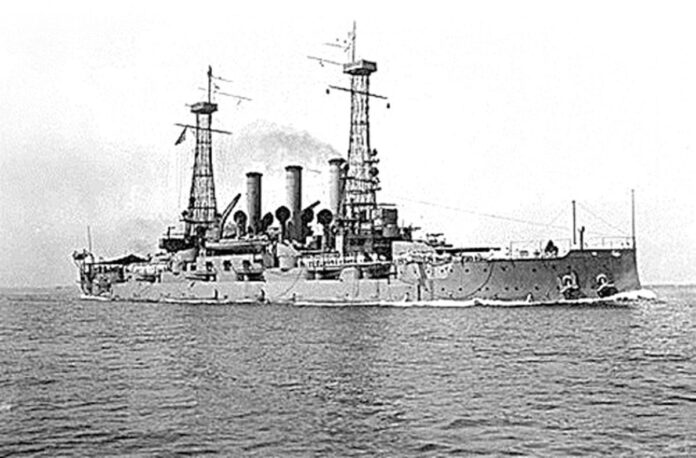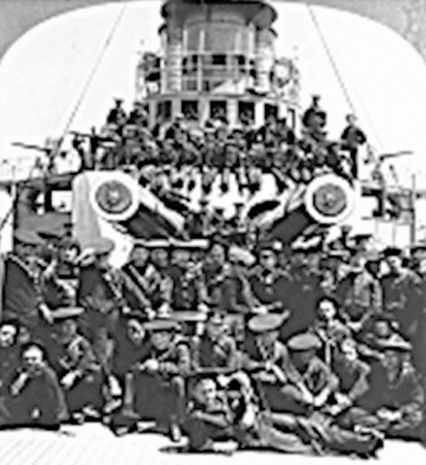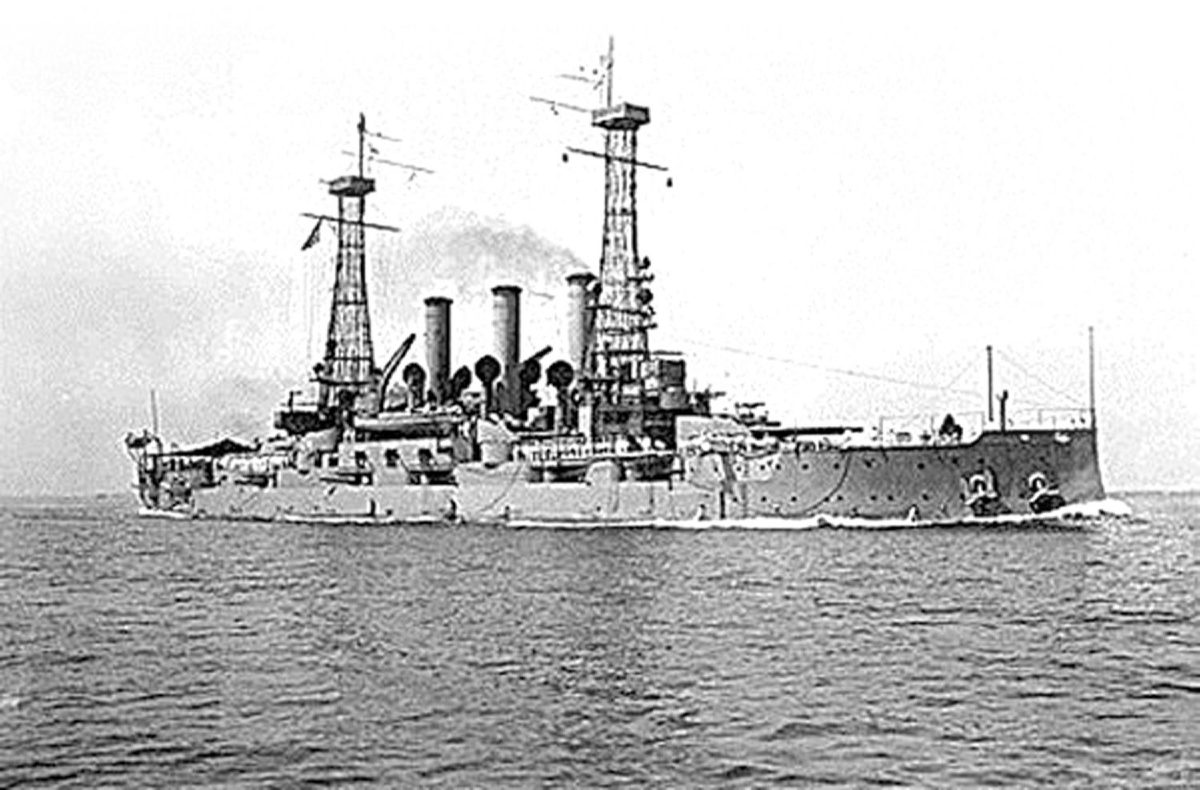BY NORMAN ROZEFF
With the battleships Florida and Utah standing offshore together with the troop transport Prairie, the U.S. was primed to act.
The American consul was asked to notify the military commender in Veracruz that the Americans were going to land a party to take control of the waterfront.
The general then sent 200 of his troops to defend the area but was soon countermanded and withdrew them to a nearby town.
Before noon a U.S. landing party of 500 Marines and 300 sailors were ashore. The situation escalated from that point. After Mexican legislators criticized the U. S. action, mobs burned the American flag and looted American businesses in Mexico City.
On Mexico’s west coast 250 Americans had to take refuge in the consulate building of Ensenada, Baja California in order to escape angry mobs.
The consul cabled Washington, “Have taken refuge in consulate. Situation critical. Send warship immediately.” The USS Cheyenne was immediately dispatched from San Diego to help the besieged Americans. It was the troop transport USS Buford that sailed from San Francisco in early May that picked up Americans all along the coast and eventually Ensenada.
In Veracruz, the cadets at the Naval Academy worked to fortify their building.
The unopposed Ameri- can sailors took over the custom house, post and telegraph offices, and the railroad terminal while the Marines were to capture the rail yard, the cable office, and the power plant.
The relative peace would not continue. When a local policeman fired on the Americans. “He was killed by return fire, but his action resulted in widespread, disorganized fighting.” This resulted in the USS Utah sending reinforcements ashore.
Overnight more U.S. warships arrived as reinforcement, and it was concluded that the whole city had to be secured.
Additional Marines went ashore on the morning of April 22 while the ships in the harbor offered gun support.
Nevertheless the Marines had to advance structure by structure. While the cadets had retreated from their academy building, civilian snipers were to occupy it. Seeking to avoid further deaths, Rear Admiral Fletcher asked the American Consul Canada to proxy a truce with the Mexican authorities. This effort failed when no Mexican leaders could be located.
A tragedy then was to ensue. Captain Edwin Anderson of the USS New Hampshire believing the area had been secured marched his seaman in formation along the Calle Francisco Canal into the city. “They encountered withering fire from the Mexicans and numerous casualties, forcing them to retreat. With supporting naval gunfire, Anderson resumed the attack and seized the Naval Academy and Artillery Barracks.
Additional American forces landed through the morning, and by noon the US had taken much of the city.”
While the casualty toll on the U. S. side was 19 Americans killed and 72 wounded, Mexican losses were estimated at 150 to 170 soldiers killed, and between 195 and 250 wounded while an unknown number of civilians were killed.
The United States was to occupy Veracruz for seven months despite the efforts of Argentina, Brazil and Chile diplomats to broker a settlement. In fact, by May 1914, a total of 71 U.S. Navy ships were operating in Mexican waters.
The following battleships that were dispatched to Mexican waters included the: Ohio (BB-12), Virginia (BB-13), Nebraska (BB-14), Georgia (BB-15), New Jersey (BB-16), Rhode Island (BB-17), Connecticut (BB-18), Louisiana (BB-19), Vermont (BB-20), Kansas (BB-21), Minnesota (BB-22), Mississippi (BB-23), Idaho (BB-24), New Hampshire (BB-25), South Carolina (BB-26), Michigan (BB-27), Delaware (BB-28), North Dakota (BB-29), Florida (BB-30), Utah (BB-31), Wyoming (BB-32), Arkansas (BB-33), New York (BB-34) & Texas (BB-35) .
Huerta forces, who were busy contending with rebels, did little to remove the American invaders. In July 1914 the harsh dictator Huerta resigned. Naturally, following this invasion, relations with Mexico and its new president, Venustiano Carranza, were strained. Mexico favored Germany and did not join with allied forces in fighting Germany in World War I.
Historians debate whether the United States was, and is, an imperialistic power. During the late 19th and early 20th century American incursions into Cuba, the Philippines, Nicaragua, Haiti, and Mexico offer much fodder for historians to digest.






